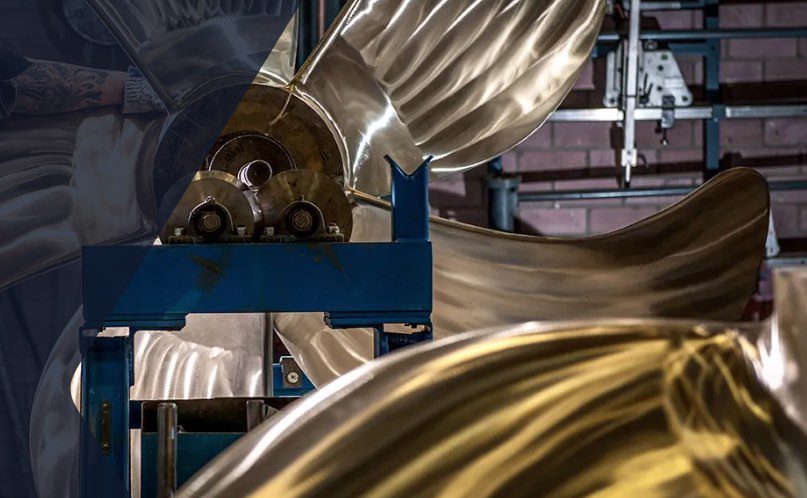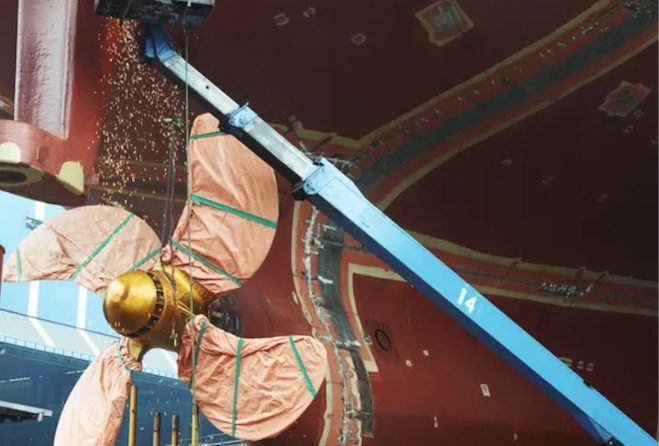28 November 2024
Why 3D scanning measurements are so important

3D scanning and measurement can help ship owners with equipment health checks, design optimization, and upgrade planning.
Table of Contents
3D scanning measurements
Measurement technology has come a long way since tape measures and rulers. 3D measurements not only give you accurate information about length, height, and width, but they also reveal important information about shape and position. If you’re a ship owner this information can save you money, help make sure your equipment is safe, and assist in making the right decisions the first time.
Definition
3D scanning measurement is a process that is used to capture data about physical objects in 3D. For instance, their shape and geometry. It is performed by experts with tools that use non-destructive measurement methods, such as laser lights and physical probes, to gather data.
Methodology
Measuring a piece of equipment such as a propeller, thruster, or engine in 3D space can be done in 3 ways:
- With a laser, using a physical probe – the most accurate method.
- Using 3D scanning cameras covering millions of points on the equipment – a compact solution that gives sufficiently accurate results for equipment such as propellers.
- With a scanner that can scan an entire hull or thruster room – this can be done in the dry dock and helps to see if equipment will fit or if piping is in the way, for example.
Not all of these measurements require drydocking – for example, a ship’s propeller can be scanned while the vessel is still in the water, saving you both time and money. While traditional 2D measurements can sometimes be quicker and even more accurate, they do not provide information about the relative position of objects in a three-dimensional space. 3D measurements can do this, giving you the best possible knowledge of your vessel.

How energy-saving technologies can help CII rating
Hard data and real-world examples from vessel operators on how can energy-saving technologies help you comply with CII.
Ship Nerd
3D Benefits
3D scanning measurements can be used to:
- perform health checks on individual components during an overhaul to verify their condition
- provide data for hydrodynamic modeling, which is used when determining how to optimize the ship’s design or when designing energy-saving technologies
- make sure upgrades of complex areas like engine rooms go smoothly, with all new parts fitting first time
Perform equipment health checks
In the event of abnormal performance, operational problems, or unfortunate damage to the vessel’s equipment someone might wonder if the equipment is still in the specification or if it needs new parts. Therefore, 3D scanning measurement can be used during the scheduled maintenance or repair to accurately verify the condition of components.
Optimize Ship Design or Add Energy-Saving Technologies
A method of making the ship’s propulsion system more efficient, having an accurate picture of your equipment can reveal the best way to do this. For instance, data from a 3D scan of the propeller can be used by experts to improve its design while also taking into account how it interacts with the ship’s hull along with the operational profile.
If you are looking to install energy-saving propeller cap fins, a 3D scanning measurement can be used to gather the propeller parameters. The design experts will then use this information when designing the hub vortex absorbing fins to ensure it will fit perfectly the first time. The scan can be done while the vessel is afloat, with no need to wait for docking.
Where to Find?
3D measurement and scanning services can be delivered anywhere in the world by specially vetted data-capture partners. Scanning can be arranged at very short notice – within a day in many cases. The raw data are analyzed and compared with quality information, tolerances, 3D models, and engineering data to see where the actual measurements differ from what would be optimal. 3D Scanning and measurements are extremely accurate – within 20 microns – and the equipment is calibrated annually by the OEM.
See Also
According to the Program Manager of LR’s Maritime Decarbonisation Hub, Charles Haskell, the reality is that no ship can be fully future-proofed yet because the marine fuels of the future are still under development and there are few rules, designs, or builders, no crews, and no managers for the ships of tomorrow.

Retrofit vs newbuild? 45% of ships today will not comply
Carbon regulations targeting older, less efficient ships. Is it wiser to retrofit an existing vessel to improve its ratings, or replace it with a newbuild?


